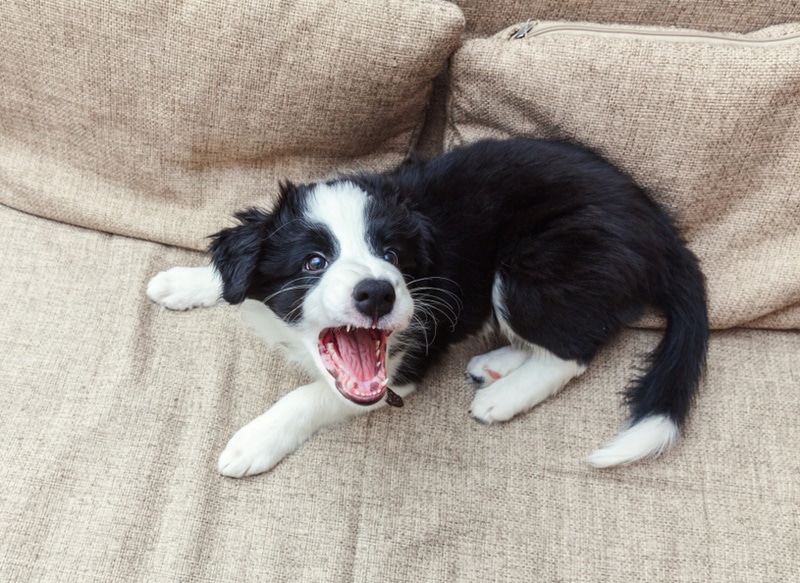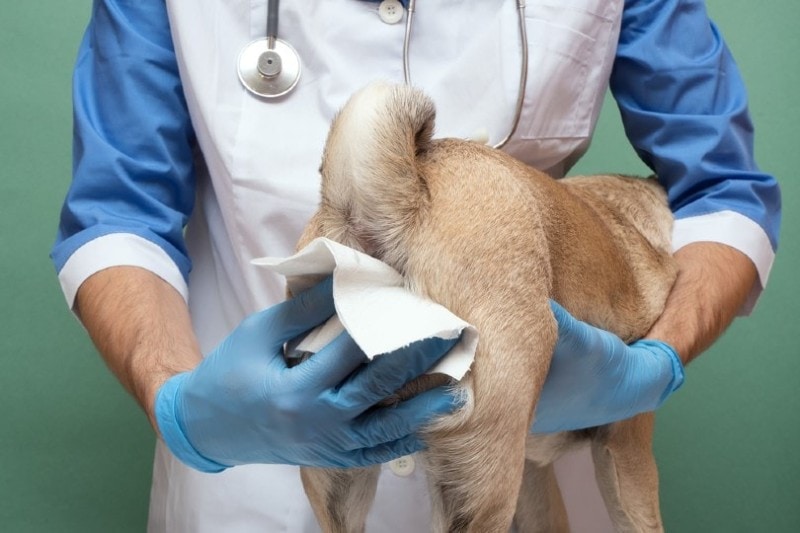20 German Dog Breeds (with Pictures)
By Jordyn Alger
Updated on
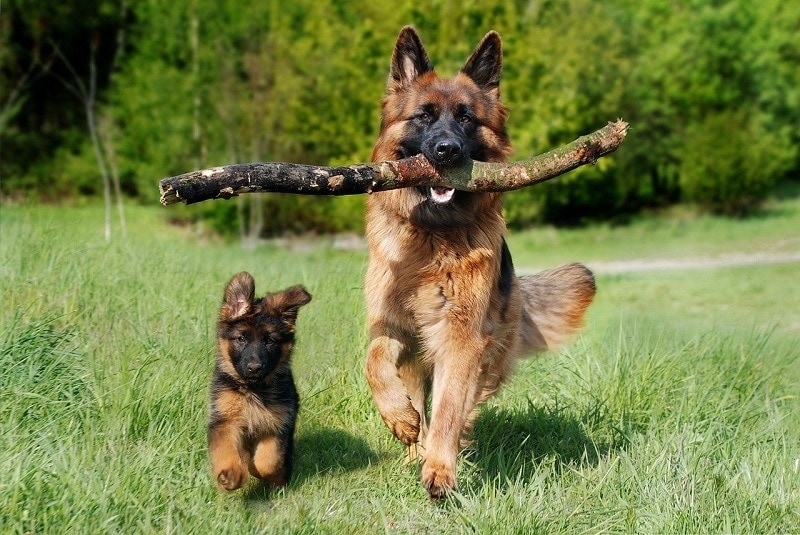
There are hundreds of unique dog breeds in the world with their own fascinating history and heritage. While most breeds have been distributed to countries beyond where they originated, many are still identified by their roots.
Germany is the homeland of many popular dogs. If you are curious to learn some of the breeds that were originally developed in Germany, this article will take a look at 20 German dog breeds and provide a quick yet thorough rundown of each.
The 20 German Dog Breeds
1. Schnauzer
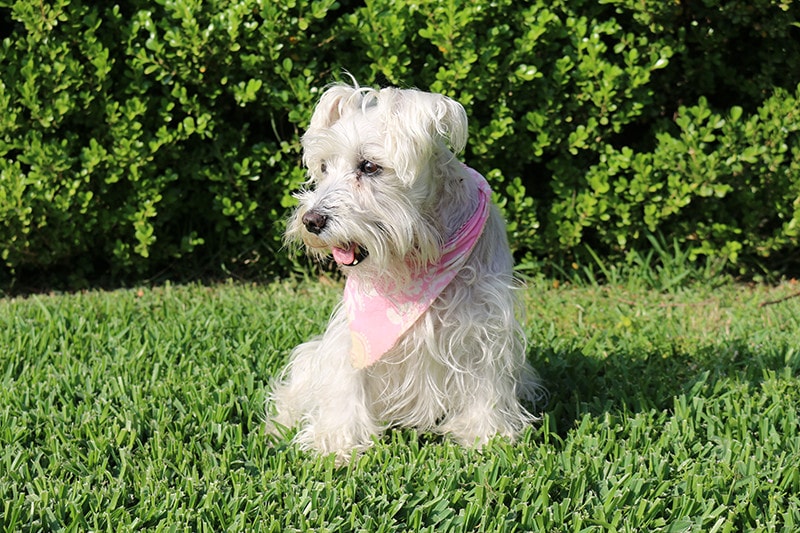
| Height | 18.5–19.5 inches |
| Weight | 35–50 pounds |
| Life Expectancy | 13–16 years |
The Schnauzer comes in three sizes: miniature, standard, and giant. While all of them are derived from the same ancestry (and are thus all German), we will focus on the Standard Schnauzer in this article.
Schnauzers are bold, high-spirited animals with an occasional stubborn streak. They were bred to be farm dogs in Germany and are highly athletic as a result. They are known for being sociable, enthusiastic, and vigilant. Schnauzers are beloved as excellent companions, making them popular dogs to this day.
2. Dachshund
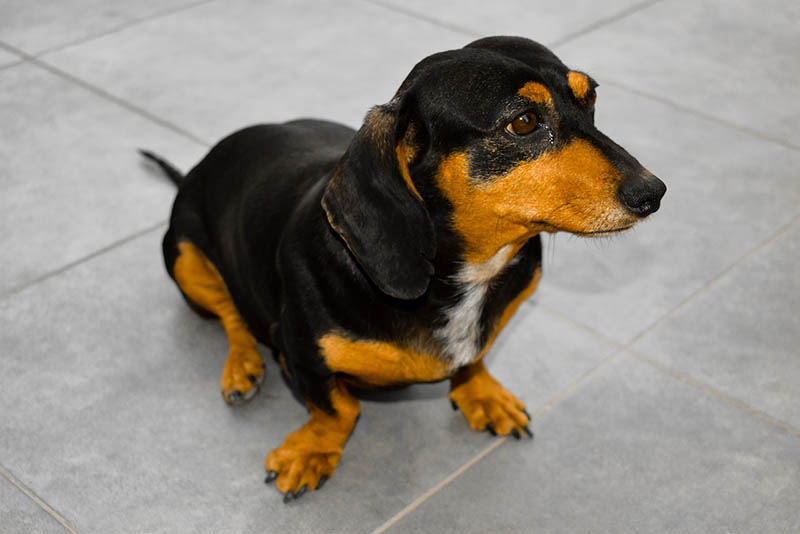
| Height | 8–9 inches |
| Weight | 16–32 pounds |
| Life Expectancy | 12–16 years |
Even those unfamiliar with dogs know the Dachshund. Commonly referred to as the “wiener dog,” they have a short yet long body that resembles a sausage. As adorable as this dog is, it is much more than a pretty face.
Dachshunds are curious, friendly, and spunky dogs with a lot of love to give their families. Their history in Germany goes back 600 years, when they were bred to hunt badgers. Their unique shape aided them in diving into a badger’s hole, snagging their prey, and dragging them out.
3. German Shepherd
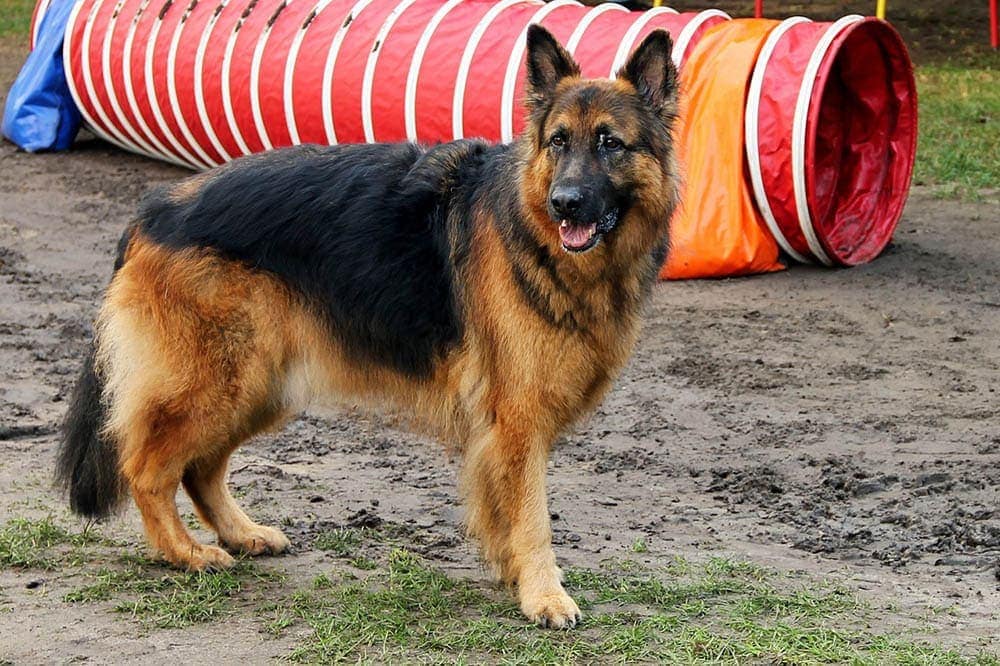
| Height | 24–26 inches |
| Weight | 65–90 pounds |
| Life Expectancy | 7–10 years |
Of course, this list of German dog breeds wouldn’t be complete without the German Shepherd. They are renowned for being intelligent, courageous, and confident, making them the ultimate guard dog. This muscular, agile dog is an adept worker that’s loyal to their owners. They have big hearts for their family members while remaining somewhat aloof to strangers.
The breed was developed in Germany in the 1800s to be a herding dog. However, the German Shepherd is used for various tasks today, even if that task is as simple as just being a good friend.
4. Eurasier

| Height | 19–24 inches |
| Weight | 40–70 pounds |
| Life Expectancy | 12–16 years |
Eurasier dogs are among the lesser-known breeds in the world. They are medium-sized dogs with a thick coat that can take on a wide range of colors. These dogs tend to be cool, calm, and collected, with an air of confidence in them that makes them majestic. They are highly family-oriented and love to be with their favorite people.
Compared to some other German breeds, the Eurasier is relatively new. It was first acknowledged as an official breed in 1973, only a year after the breed received its name.
5. Pomeranian
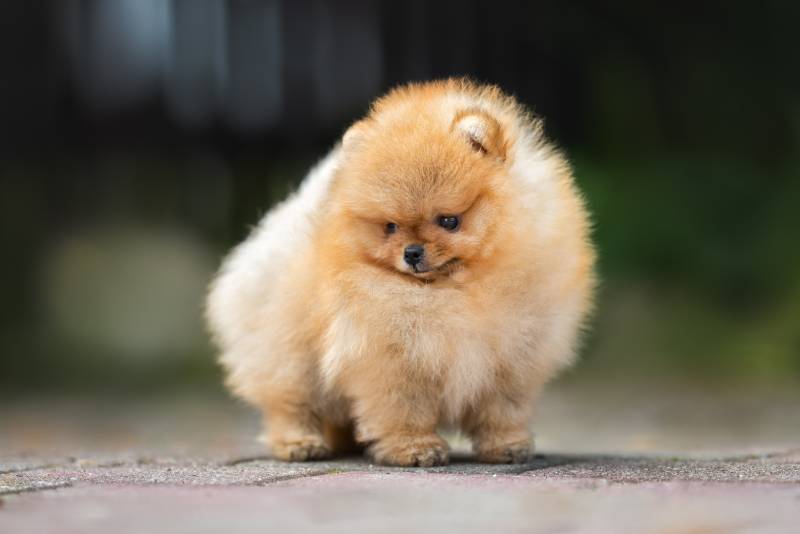
| Height | 6–7 inches |
| Weight | 3–7 pounds |
| Life Expectancy | 12–16 years |
Can you believe that the Pomeranian is German in origin? Well, it’s true! This spunky little ball of fluff was developed in the region of Pomerania, which consisted of what is now modern-day Poland and parts of Germany.
This incredibly popular dog is adored for its cute appearance and lovable demeanor. It is a bold and lively dog with great affection for its family. It is among the most popular toy dog breeds worldwide due to its excellent combination of gorgeous looks and vibrant personality.
6. Rottweiler

| Height | 24–27 inches |
| Weight | 95–135 pounds |
| Life Expectancy | 9–10 years |
Rottweilers are robust working dogs with tremendous strength. The great Mastiff breeds used by the Roman legions were the ancestors of the Rottweiler. As intimidating as they can be, most people who have met a Rottweiler know they are undeniably loving animals. These massive dogs seem unaware of how large they are, as they won’t think twice about curling up in your lap. With their loved ones, the Rottweiler is endearing, silly, and affectionate.
7. Weimaraner
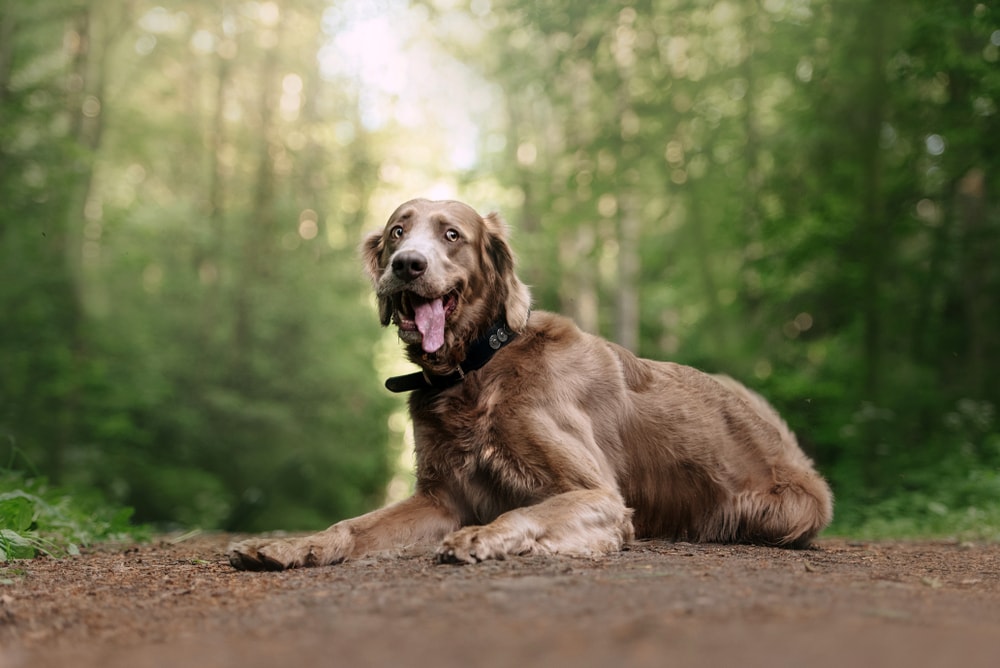
| Height | 25–27 inches |
| Weight | 70–90 pounds |
| Life Expectancy | 10–13 years |
The Weimaraner is a medium-sized dog with a sleek, athletic body. It is commonly seen with a gray coat, earning it the nickname “Gray Ghost.” These dogs are treasured for their energy and obedience, making them excellent hunting companions. This breed was developed in the 1800s by the German Grand Duke Karl August, who wanted to create the ideal hunting dog. Many believe the Grand Duke succeeded, resulting in the esteemed Weimaraner.
8. Great Dane
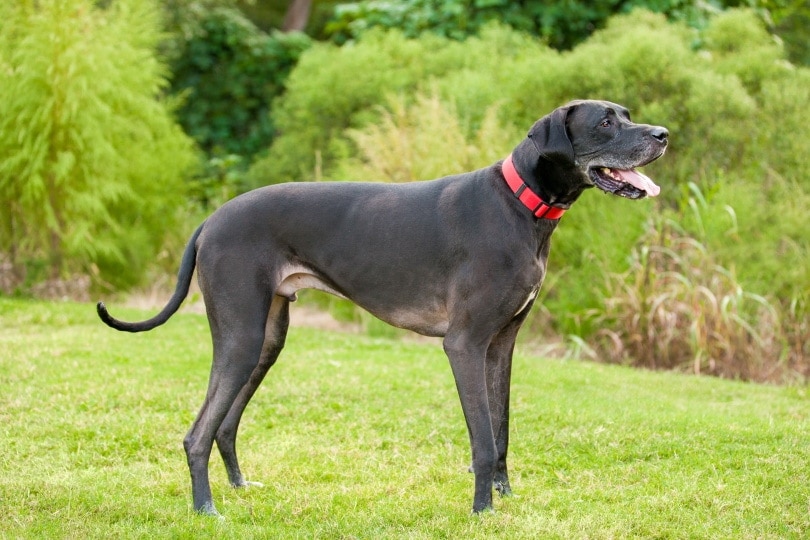
| Height | 30–32 inches |
| Weight | 140–175 pounds |
| Life Expectancy | 7–10 years |
The Great Dane is one of the most well-recognized breeds, and not just because of the titular character Scooby-Doo. Great Danes have been popular for generations and have even earned the nickname of the “Apollo of Dogs.” It’s no mystery why this nickname came to be—the Great Dane is a massive, magnificent creature. It is a mystery how the breed became associated with Denmark when it is German. Perhaps someone way back in the day thought it sounded better.
9. Small Munsterlander
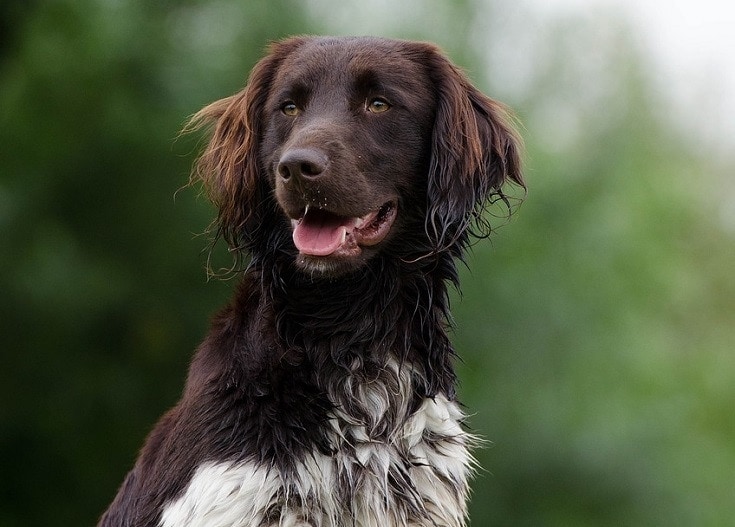
| Height | 20.5–21 inches |
| Weight | 40–60 pounds |
| Life Expectancy | 12–14 years |
Small Munsterlanders are versatile dogs, especially when it comes to hunting. They are excellent retrievers, adept pointers, and precise trackers. They are willing to leap into the water to bring back any manner of prey. Even better, Small Munsterlanders are eager to please, making them excellent dogs to train. All of the qualities that make it such a proficient hunter can be attributed to concentrated breeding efforts in Germany during the 19th century. Even when not used for hunting, these dogs are great companions due to their intelligence and devotion.
10. Poodle
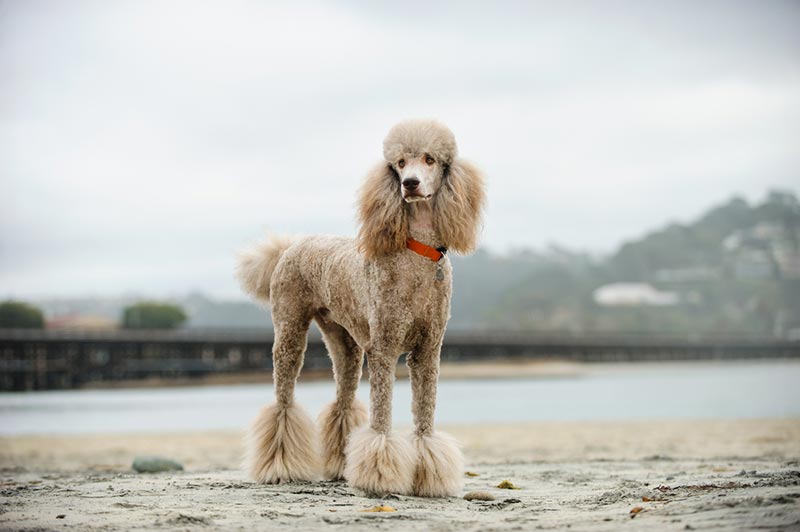
| Height | 15+ inches |
| Weight | 60–70 pounds |
| Life Expectancy | 10–18 years |
Many people believe that this dog originated in France. It’s an understandable mistake, considering that the Poodle is the national dog of France. However, the Poodle was developed in Germany.
Poodles were bred to be duck hunters, believe it or not. They were tasked with retrieving ducks from bodies of water and returning them to the hunters. In fact, the Poodle’s unique coat was designed specifically to protect the dog against cold water and other harsh elements. These days, Poodles are not often used for hunting, but they still retain their high intelligence and energy.
11. Leonberger
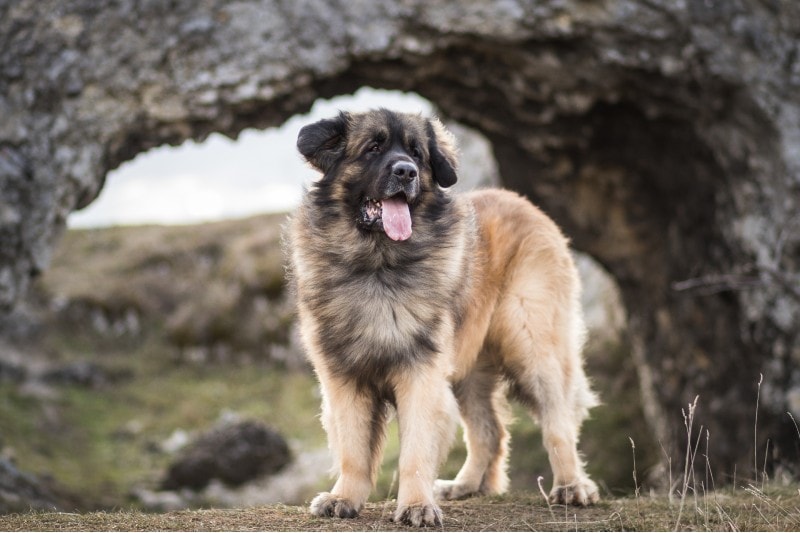
| Height | 28–31.5 inches |
| Weight | 110–170 pounds |
| Life Expectancy | 7 years |
Leonbergers are giant dogs with lush coats. They are friendly and playful, yet they carry themselves with an air of serenity that few other breeds can replicate. Many people admire the Leonberger for its noble grace and majestic presence, and plenty of people adore it for its luxurious and beautiful appearance.
They were developed in the 19th century by a German politician and entrepreneur named Heinrich Essig. Essig was based in Leonberg, Germany, where the Leonberger was named.
12. Jagdterrier
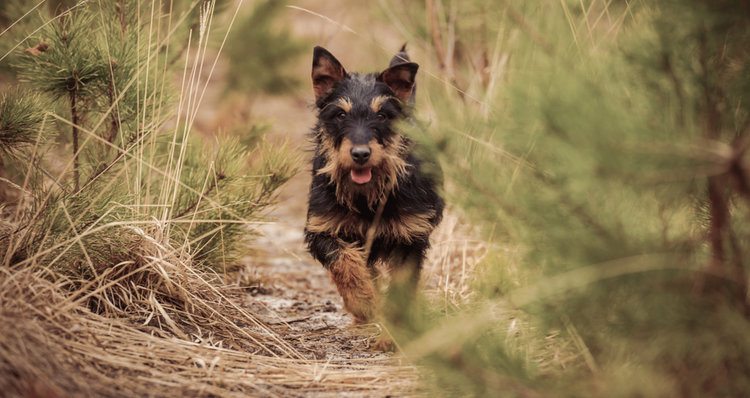
| Height | 13–16 inches |
| Weight | 17–22 pounds |
| Life Expectancy | 10–12 years |
The Jagdterrier is also known as the Deutscher Jagdterrier. Compared to some breeds on this list, the Jagdterrier is fairly new, and the development of the breed began after World War I. The intention of this breeding program was to create a breed entirely focused on hunting prowess, which is why the Jagdterrier is resilient, dependable, and biddable.
They are well-suited for hunting due to their compact size, which keeps them closer to the ground so they can pick up a scent. Their size also makes them adept at hunting for underground prey.
13. Hovawart

| Height | 23–28 inches |
| Weight | 65–90 pounds |
| Life Expectancy | 10–14 years |
Hovawarts are intelligent and vigilant dogs. They are faithful companions with endless love and affection for their families. They are a very old German working breed that has experienced the threat of obscurity and extinction more than once, but thankfully, dedicated enthusiasts of the breed were able to save it. As a result of strict breeding regulations, the Hovawart is considered one of the world’s healthiest and longest-lived working breeds.
14. Doberman Pinscher
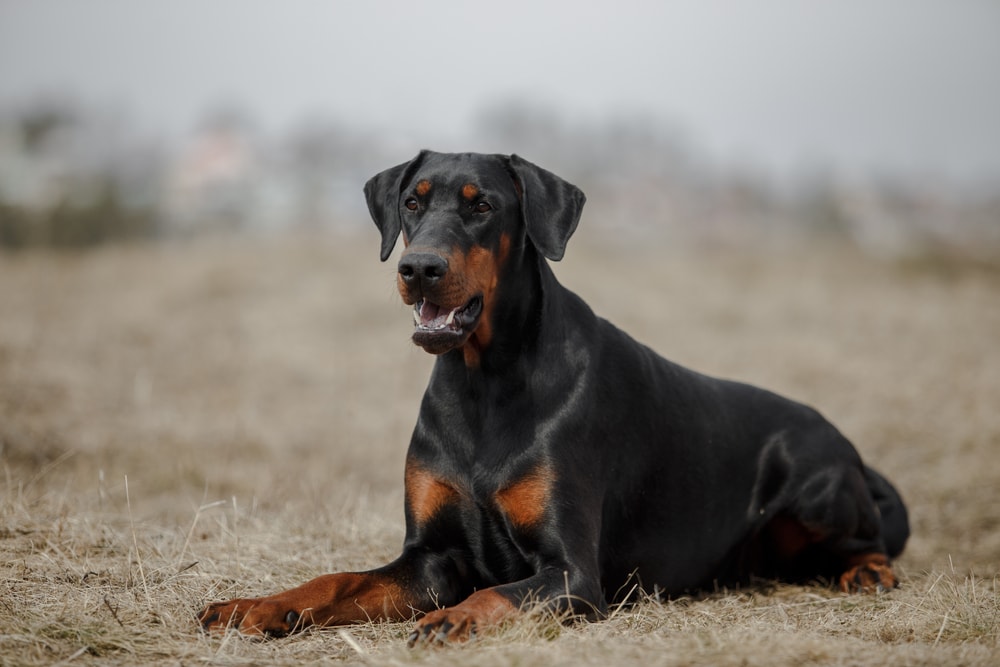
| Height | 26–28 inches |
| Weight | 75–100 pounds |
| Life Expectancy | 10–12 years |
The Doberman Pinscher is a sleek, muscular dog with incredible power. They are revered for their magnificent appearance and appear noble with their athletic build and proud stature. Doberman Pinschers are known to be loyal and fearless companions, making them remarkable watchdogs. Their original purpose was to protect the creator of the breed, Louis Dobermann, as he traveled along his tax-gathering route. Today, Doberman Pinschers excel as police companions and therapy dogs.
15. German Spitz
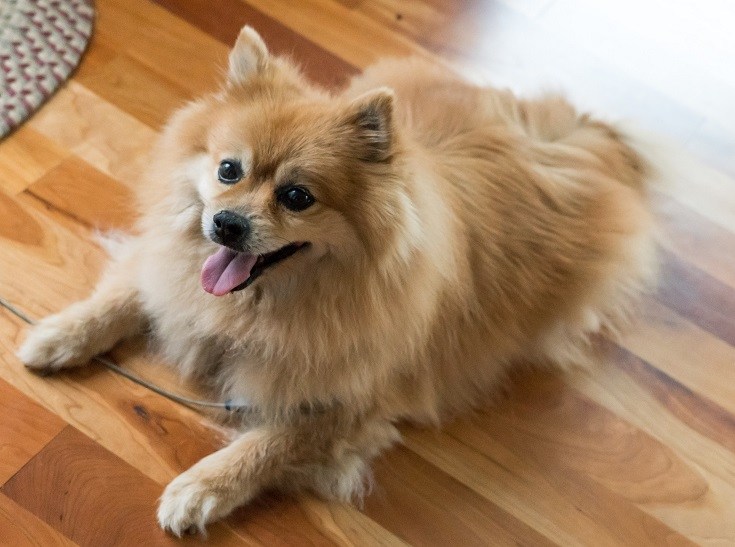
| Height | 12–16 inches |
| Weight | 15–25 pounds |
| Life Expectancy | 13–15 years |
If you are looking for an attentive and energetic dog from Germany, the German Spitz will be the way to go. This dog has limited hunting instincts, but they have a lot of vigilance. They are adept household guardians, always ready to alert you of danger. The German Spitz is endlessly devoted to its loved ones.
Due to the mane-like collar around their neck, the German Spitz is a beautiful canine. That feature, in addition to his bushy tail and fox-shaped face, makes this dog especially unique.
16. German Shorthaired Pointer
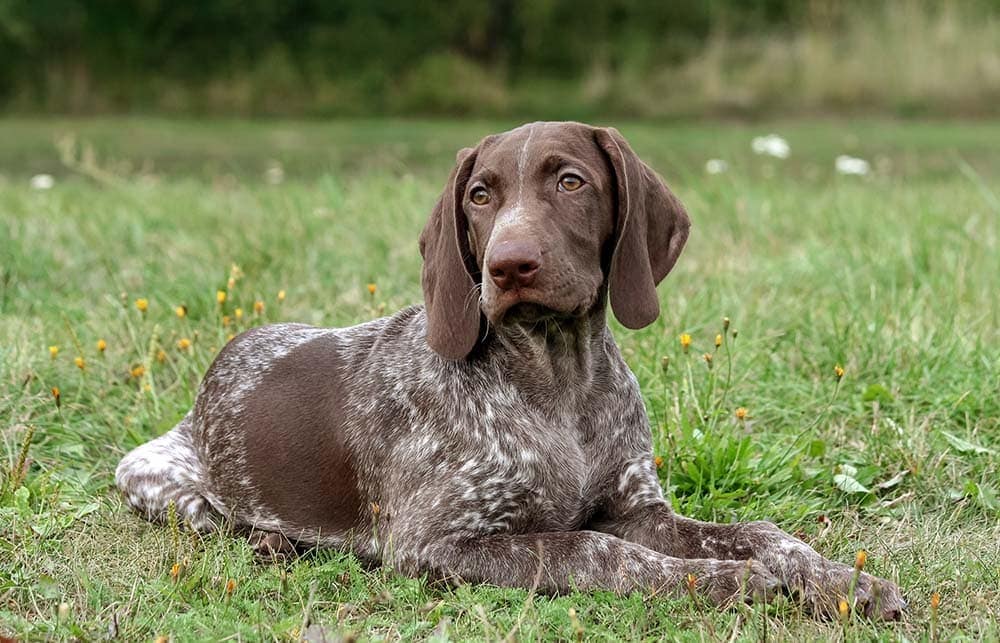
| Height | 23–25 inches |
| Weight | 55–70 pounds |
| Life Expectancy | 10–12 years |
German Shorthaired Pointers are medium-sized dogs that can thrive in several roles. As pointers, they make adept hunting companions. They excel in strength, speed, resilience, and agility. They do best in households where they’ll get plenty of exercise, consistent training, and positive reinforcement training.
Shorthaired Pointers were developed in the 1800s by several people, with efforts spearheaded by Prince Albrecht zu Solms-Braunfels. Together, these enthusiasts created a dog capable of hunting possums, rabbits, various birds, raccoons, and even deer.
17. Boxer
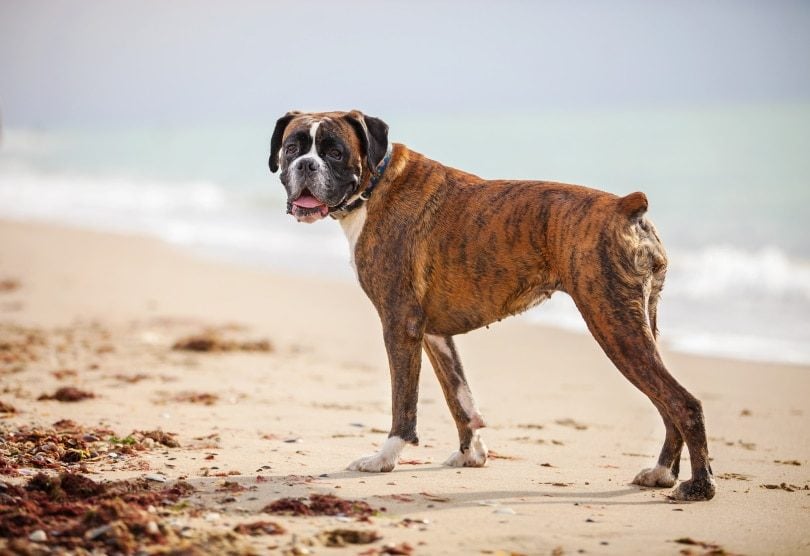
| Height | 23–25 inches |
| Weight | 65–80 pounds |
| Life Expectancy | 10–12 years |
Boxers can be traced back to late 1800s Germany, where they were bred down from another German breed known as the Bullenbeisser. The result was a supremely loyal, affectionate, and intelligent breed. Boxers are courageous and occasionally silly, making them excellent family companions. Due to their remarkable dispositions, Boxers have been popular dogs in America for many years, and they are also great with children.
18. Affenpinscher
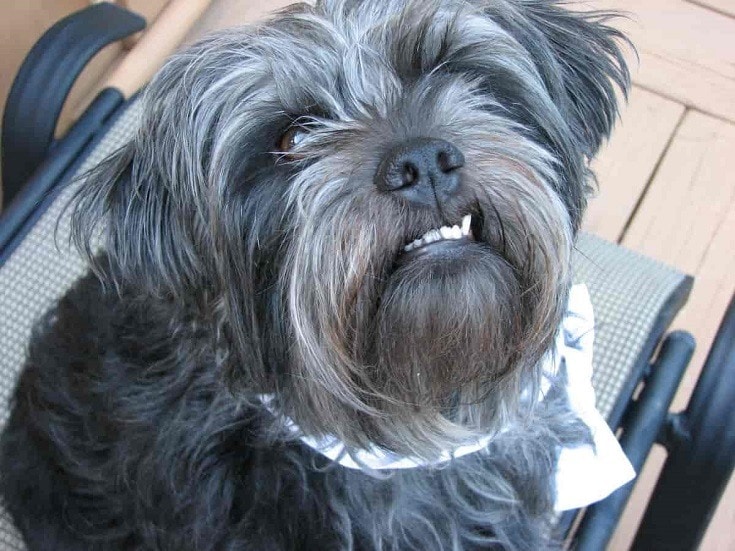
| Height | 9–11.5 inches |
| Weight | 7–10 pounds |
| Life Expectancy | 12–15 years |
While they are not the most common German dogs in the world, Affenpinschers are incredibly beloved by those who have come to know them. They are not officially Terrier dogs but were bred to work like them. Affenpinschers were intended to patrol German stables in the 1600s, exterminating rodents and other pests. As time passed, their purpose evolved from just being a ratter to being a companion. Today, the Affenpinscher is a loyal, affectionate dog that loves entertaining its family.
19. Bavarian Mountain Scent Hound

| Height | 17–20.5 inches |
| Weight | 37–66 pounds |
| Life Expectancy | 12–15 years |
Bavarian Mountain Scent Hounds are loyal, even-tempered canines with an aloof attitude toward strangers. They are balanced, confident, and courageous animals with intense devotion to their owners. They are lithe and active dogs with incredible scenting capabilities. It is said that their noses are so precise that they can distinguish between an injured animal that they are tracking and other animals of the same species. These dogs love to be around their families and don’t do well with being confined, and they are affectionate and energetic.
20. German Pinscher
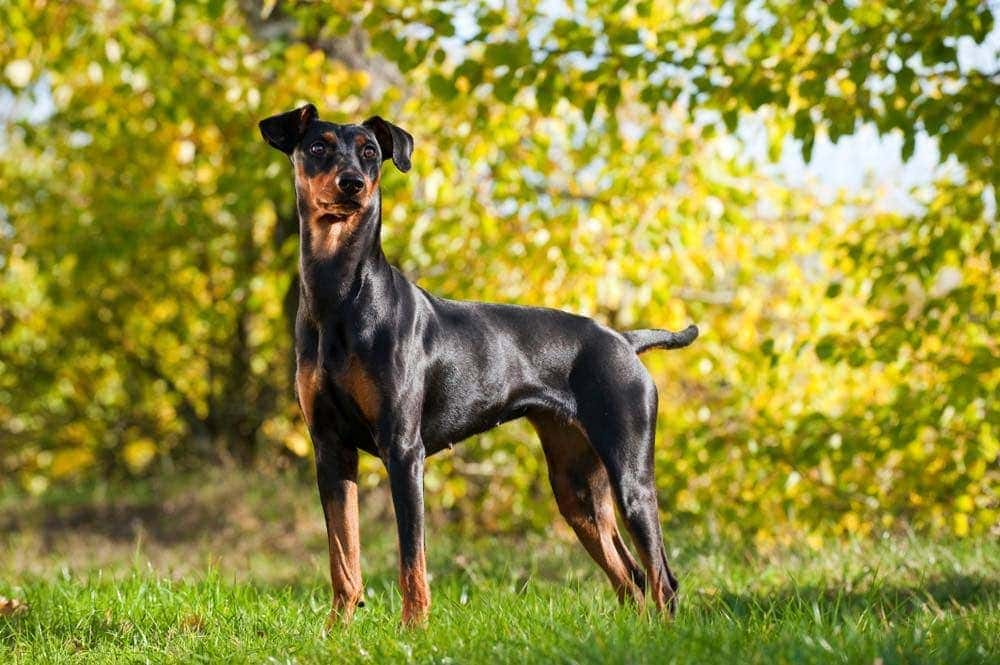
| Height | 17–20 inches |
| Weight | 25–45 pounds |
| Life Expectancy | 12–14 years |
German Pinschers are similar in appearance to Doberman Pinschers but smaller in size and stature. They are sleek, lithe animals and are one of Germany’s oldest breeds. They are often considered the prototype for other Pinscher dogs. German Pinschers were initially bred to be rat catchers, but they are now used for various tasks.
They are lively dogs with keen intelligence and a courageous spirit. They are easy to train, full of energy, and always need a task to keep their mind occupied.
 Conclusion
Conclusion
German dogs are incredibly diverse, ranging from the adorable Pomeranian to the majestic Doberman Pinscher. The diversity of dogs hailing from Germany is so great that there is surely a breed for everyone, no matter their preference. We hope this article has helped you learn something new about the wonderful dog breeds in this list and their unique German history.
See also:
- Are Saint Bernards Good Family Dogs?
- 20 Extinct Dogs: Breeds That No Longer Exist (with Illustrations)
Featured Image Credit: CAPTUREHUB, Shutterstock

 Conclusion
Conclusion
